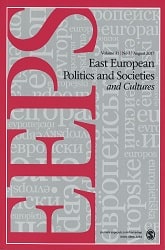The Cultural Roots of Estonia’s Successful Transition: How Historical Legacies Shaped the 1990s
The Cultural Roots of Estonia’s Successful Transition: How Historical Legacies Shaped the 1990s
Author(s): Li Bennich-BjörkmanSubject(s): Cultural history, Political history, Government/Political systems, Politics and society, Interwar Period (1920 - 1939), Transformation Period (1990 - 2010), Post-Communist Transformation, Sociology of Politics
Published by: SAGE Publications Ltd
Keywords: Estonia; cultural legacy; post-communism; transition; interwar period;
Summary/Abstract: This article investigates the cultural roots of Estonia’s surprisingly successful transitions in the 1990s. Taking the point of departure in historical institutionalism, two layers of political cultural legacies are identified as particularly crucial in preparing Estonia for the democratic government installed after independence. First, the article argues that even in a Baltic context, Estonia stood out as a hotbed for social initiatives and elite networks during Communist times. Second, to understand why such liberalisation within the authoritarian Communist regime started earlier in Estonia than elsewhere in the Soviet Union, there is a need to acknowledge the importance that the historical experiences of the inter-war republic played. Estonia then developed a civic culture that partly survived even during the Päts regime from 1934 to 1939. These experiences surfaced once the yolk of Stalinism was lifted in the 1950s and shaped Estonia under Communism into a society of “collective mobilization” where democratically inclined counter-elites could form.
Journal: East European Politics and Societies
- Issue Year: 21/2007
- Issue No: 02
- Page Range: 316-347
- Page Count: 32
- Language: English
- Content File-PDF

